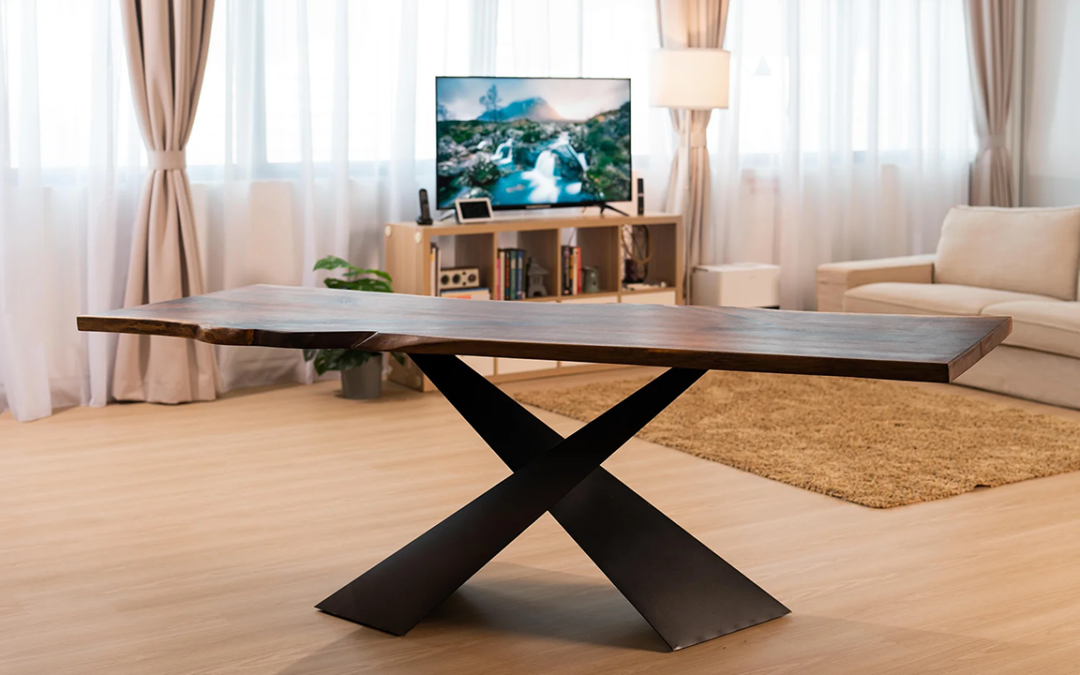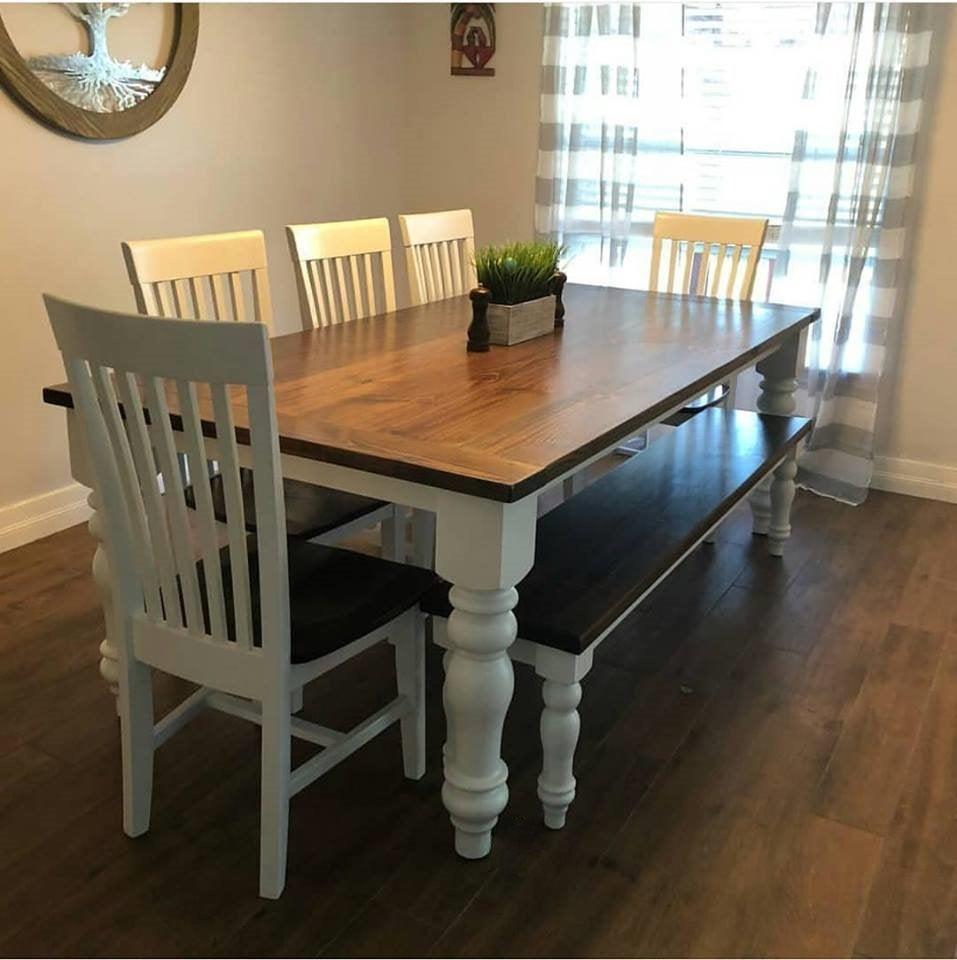Upgrade Your Furniture with Fashionable Dining Room Table Legs
Upgrade Your Furniture with Fashionable Dining Room Table Legs
Blog Article
A Thorough Check Out Table Leg Styles: Finding the Suitable Match
Picking the appropriate eating table leg style is critical for both visual allure and practical functionality. For those with larger tables, trestle legs make sure tough support, whereas hairpin legs introduce a mid-century contemporary ambiance with their minimal style. The x-shaped legs blend contemporary style with enhanced stability.
Conventional Four Legs
Among the different kinds of dining table leg styles, the conventional four-leg layout remains an ageless selection for lots of houses. This traditional configuration supplies a harmonious blend of functionality and aesthetics, making it a perennial favorite. 4 legs provide well balanced assistance, guaranteeing the table stays stable and efficient in birthing substantial weight. This is especially advantageous for families that often hold large gatherings or utilize their table for several purposes, such as work or crafting.
From an aesthetic perspective, the typical four-leg layout can be easily adapted to numerous interior styles. Whether crafted from timber, steel, or a mix of products, these legs can be intricately carved, smooth and minimalistic, or anything in between. Their convenience allows them to complement both rustic and modern settings perfectly.
Moreover, the straightforward framework of the four-leg design facilitates simplicity of movement and positioning within a room. Unlike more complex bases, this style lessens blockages, providing sufficient legroom for diners. In summary, the conventional four-leg eating table leg style weds withstanding sophistication with functional performance, making it an astute option for those looking for both type and function in their eating furnishings.
Pedestal Base
Often celebrated for its classy and space-efficient layout, the pedestal base is a distinguished alternative to the traditional four-leg configuration in dining table leg styles. Without corner legs, restaurants are afforded higher flexibility of movement, making it an ideal option for round and oblong tables that promote more intimate and inclusive gatherings.
Additionally, the pedestal base's central assistance can manage considerable weight, allowing for using heavier table tops, such as marble or thick wood. This toughness paired with its visual adaptability makes the pedestal base a popular selection in both typical and modern indoor settings. It can effortlessly integrate with numerous layout styles, from timeless style to minimalist modernity. In addition, the main column itself uses a canvas for detailed designs and artistic expressions, including an aspect of aesthetic passion underneath the table. In summary, the stand base integrates capability with design, making it a fine-tuned and practical choice for diverse dining settings.
Trestle Legs
Trestle legs give a robust and timeless foundation for dining tables, defined by their straight cross-bracing and strong assistance beams. Originating from middle ages times, this design has evolved yet kept its necessary structure, making it a seasonal favorite in both standard and contemporary setups. The main trestle light beam, typically supported by two or even more vertical posts, supplies outstanding stability, permitting bigger table lengths without the requirement for added legs.
A significant benefit of trestle leg tables is the sufficient legroom they provide. click here for more info Unlike tables with four corner legs, the absence of blockages at the table's edges supplies unblocked area for chairs and diners, enhancing comfort and access. This makes trestle tables optimal for accommodating bigger celebrations, whether in an eating area or a banquet hall.
From rustic farmhouse to smooth modern-day layouts, trestle legs can be personalized to match specific preferences. Their long-lasting appeal and practical benefits make trestle legs an engaging choice for those looking for both style and usefulness in their eating table.
Barrette Legs

The charm of barrette legs hinges on their simplicity and adaptability - dining room table legs. Offered in a range of materials, including steel and brass, they can be completed in countless shades to enhance various interior styles. Whether paired with a rustic wood table top or a modern glass surface area, barrette legs effortlessly blend functionality with a touch of vintage appeal
Longevity is an additional significant feature of barrette legs. Despite their fragile look, these legs are engineered to bear considerable weight, making certain the dining table stays secure and safe. Furthermore, they are fairly very easy to mount, making them a popular selection for DIY lovers and expert furniture manufacturers alike.
X-Shaped Legs

Constructed from products such as steel, timber, or a mix of both, X-shaped legs can be tailored to match different layout preferences. Steel legs typically offer a smooth and industrial feeling, perfect for loft-style homes and modern eating spaces. On the other hand, wooden X-shaped legs use a warmer, extra rustic allure, ideal for farmhouse or eclectic interiors. The versatility in materials permits property owners to tailor their eating tables to much better fit their overall style system.
Furthermore, the design behind X-shaped legs makes sure even weight distribution, decreasing the risk of wobbling and boosting longevity. This makes them particularly appropriate for bigger table that call for extra support. Fundamentally, X-shaped legs blend useful engineering with contemporary aesthetics, making them a timeless selection for diverse eating atmospheres.
Final Thought
A comprehensive understanding of dining table leg designs discloses the distinctive qualities and advantages of each design. Traditional 4 legs offer stability and timeless allure, while click here now stand bases give legroom and a streamlined look. Trestle legs make sure robust support for larger tables, and hairpin legs introduce a mid-century modern-day aesthetic. X-shaped legs combine modern design with improved security. Selecting the proper leg design ensures both useful and aesthetic fulfillment in any kind of dining space.
Report this page